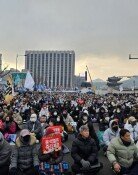The worst equipment investment index in 11 years
The worst equipment investment index in 11 years
Posted September. 02, 2023 08:09,
Updated September. 02, 2023 08:09
Production, consumption, and investment, the three pillars of the Korean economy, all took a step backward together for the first time in six months. According to Statistics Korea, the index of industrial production shrank by 0.7% in July, marking the first decline in three months, while consumption fell by 3.2%, the biggest drop in three years. In particular, equipment investment plunged by 8.9%, marking the largest decline in 11 years and four months.
The government explained that the drops reflected temporary factors such as poor summer weather, the end of special excise tax cuts for cars, and an unstable Chinese economy. It stated that this is only a temporary setback, and the underlying recovery is continuing. However, this explanation may be overly complacent, given the magnitude of the drops in key indicators. Since the three key indicators have been declining together since the first month of the second half of the year, there are significant concerns that the government's hoped-for 'low growth in the first half of the year and high growth in the second half of the year' is a distant prospect.
Adding to the concerns, investment, the last bastion of economic recovery, has also plummeted amid sluggish exports and domestic consumption. Major conglomerates have sharply reduced or delayed investments this year due to the semiconductor industry's slow recovery and the stumbling Chinese economy, Korea’s biggest trading partner. Manufacturing export shipments plunged by the largest margin in 36 years in July (-14.5%), and the manufacturing inventory rate soared by more than 11 percentage points as China's economic retreat and supply chain reorganization have clogged exports.
If the so-called 'China risk' intensifies, business investment and exports will contract further, making even 1% growth difficult to achieve. There is no silver bullet to escape the low-growth crisis other than revitalizing business investment through regulatory reforms. Price instability, soaring household debt, and the risk of capital outflows have made it challenging for monetary authorities to lower interest rates. Additionally, a record decline in tax revenue has depleted our fiscal capacity. With limited monetary and fiscal policy options, fiscal stimulus, which can be easily implemented, is a way to streamline regulations.
But the regulatory shackles that hold businesses back are everywhere. Less than 10% of the onerous regulations identified by the Korean Chamber of Commerce and Industry four years ago for new industries have been improved to date. Each administration has attempted to reform regulations, promising to ‘pull up electric poles,' ‘remove thorns under fingernails,' and 'promote regulatory sandboxes,' but with limited success. The current administration has also initiated efforts to overhaul 'killer regulations,' such as lifting restrictions on 30-year-old industrial complexes. However, most of these changes require legal amendments, raising concerns that they may remain mere rhetoric. To keep the remaining embers of economic recovery alive, the government, the National Assembly, and the private sector must collaborate to accelerate the regulatory revolution.
Headline News
- Joint investigation headquarters asks Yoon to appear at the investigation office
- KDIC colonel: Cable ties and hoods to control NEC staff were prepared
- Results of real estate development diverged by accessibility to Gangnam
- New budget proposal reflecting Trump’s demand rejected
- Son Heung-min scores winning corner kick







